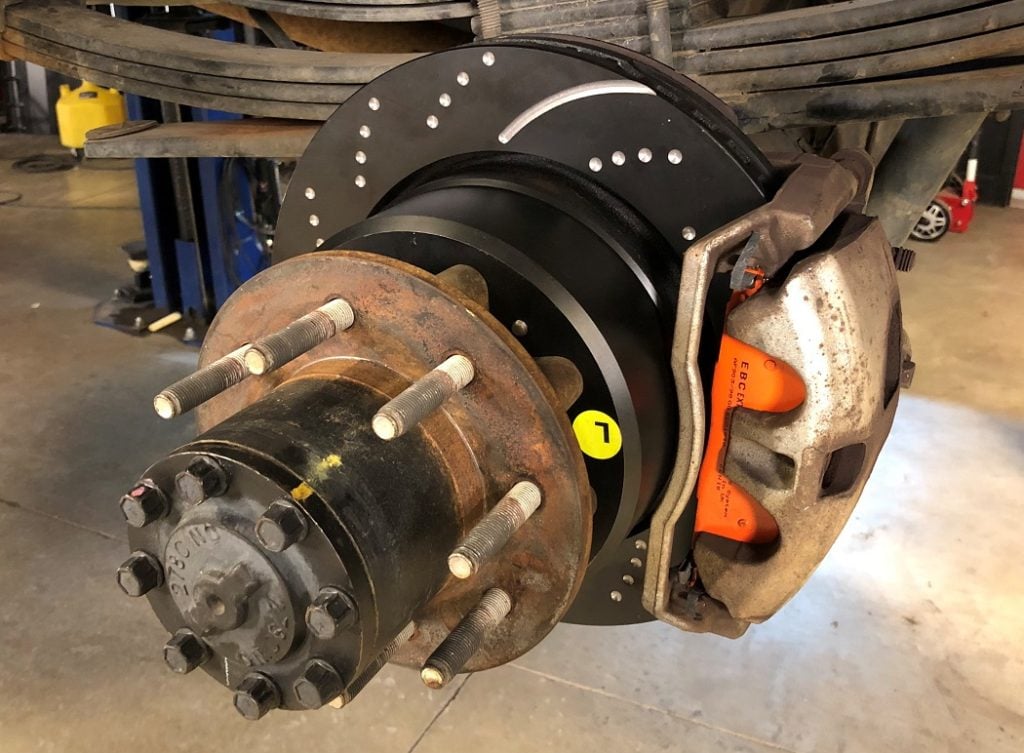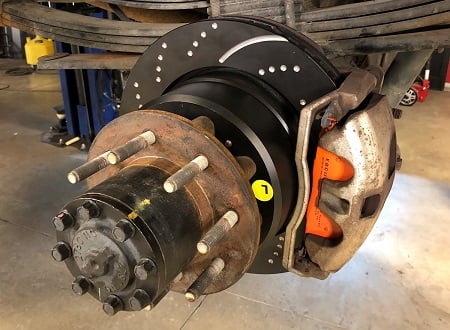Written By: L.T. Tolman
Anyone who has been driving on public roads for any amount of time, has no doubt experienced a panic stop. One minute you’re cruising at highway speed, minding your own business, and a Nickleback song comes on the radio. Your knee-jerk reaction is to reach over and change the station, taking your eyes off the road only for only a split second. Then, as soon as your focus returns to driving, there’s a Toyota Prius parked in the road 120 feet in front of you, having stopped to avoid squishing a family of sea turtles. Luckily, future you had just read this article, and your brakes have been upgraded. You quickly stand on the middle pedal, and your diesel comes to a screeching halt with inches to spare, saving the turtle family, and the occupants of the Prius.
When stopping started
In the days of horse and carriage, brake pads were often made from rawhide leather or wooden blocks, and as you can imaging, they weren’t very effective. As time went on and the automobile was refined, we started using hydraulic drum braking systems. Sometime in the 60’s, most cars started coming with front disc brakes, a design that is still used to this day, for its simplicity, and ideal stopping power. A rotating iron disc is attached to the wheel hub and sitting on the inside and outside surface of the disc is a caliper which holds the brake pads. The pads are made from varying organic, ceramic, or metallic compounds, known for high coefficients of friction, and heat resistance. Using hydraulic pressure generated ultimately by your foot, the caliper squeezes the pads against the face of the rotor, and as more pressure is applied, the rotor slows down, bringing the vehicle to a halt.
The braking systems on modern diesel trucks have a ton of stopping power. Not only are they responsible to slow down the weight of the truck and its occupants, but whenever a trailer is added into the mix, the truck has to be able to slow it down as well, since not all trailers have their own braking system. We talk a lot about how modifying a truck can exceed its design conditions, and I always refer to the equation of upgrades: whenever one part gets changed, you have to make corrections in other areas to restore balance and function to the rest of the drivetrain.
Wheels weigh how much?
Depending on the diameter, some aftermarket oversize wheels and tires and wheel can weigh as much as 140 pounds per corner. Most factory aluminum wheels and tires are in the ballpark of 60 pounds each, so you can see how the larger wheels and tires alone will require a lot more force to stop. When you combine heaver wheels and tires with faster speeds, towing a trailer, and added weight from accessories like off-road bumpers, tool boxes, or train horns, your stock brakes are going to be getting a work out. Simply put, your braking performance will be much less than stock, which is a pretty big deal when it comes to the safety of you and your fellow travelers. To fix this you can do several things, and the first braking upgrade is usually as simple as swapping to new pads and rotors.
Once your brakes get to a certain temperature after repeated or sustained use, the stopping power starts to diminish rapidly, so keeping brakes cool is important. By installing a set of drilled and slotted rotors and new pads, you accomplish several things. First, the holes and grooves machined into the face of a rotor aren’t just there for good looks, they serve a purpose. They pull away brake dust from the pad, and by capturing air in the slots, your brakes will run cooler, which will prevent fading and overheating. Second, a performance brake pad usually is made from a blend of materials with a higher coefficient of friction and higher tolerance of heat, so you can stop quicker more times in a row before the pad gets too hot and starts to fade. For the average modified truck, EBCs Stage 8 kit will be just the ticket. You get the added benefit of cooler running dimpled and slotted rotors and the extra stopping power of the Orangestuff pads, in a kit that installs in the same exact place as your worn our stock brakes, and the kit doesn’t break the bank.
One additional budget minded braking upgrade is easy as swapping your stock rubber flex lines out for a braided stainless set from Crown Performance. Stock rubber lines will expand a little when you stand on the pedal, taking away a bit braking pressure. Because the stronger braided lines won’t expand, all the braking power you put into the pedal gets transferred directly into the calipers, applying more force to the pads. This means better stopping power, and a firmer pedal feel.
While a drop-in brake kit and stainless flex lines are enough for the average enthusiast, if you have giant tires with insane amounts or horsepower, or do a lot of towing, you need the ultimate in stopping power to safely bring your rig to a stop. It might be time to step up to a big brake kit, like from Wilwood. By installing a larger diameter rotor (in some cases as big as 16 inches), the pads will have much more leverage against the spinning rotor, giving more braking power. While most stock trucks use a caliper with two pistons to squeeze the pads, the Wilwood kit used SIX pistons to apply more pressure over a larger pad area, which also translates into more stopping power.
Towing is Exhausting
While 4-wheel disc brakes are great by themselves, you can even combine them with other methods of slowing down. If you use your truck to tow more than a couple times a month, it can be advantageous to add some additional braking power. First off, make sure you have a functioning set of trailer brakes, and a controller in the truck that will operate them. Some later model trucks equipped with variable geometry turbos can be tuned to have an exhaust brake. They work by closing the vanes in the turbo, applying back pressure in the exhaust, lowering engine RPM, and the end result is the truck slowing down. An exhaust brake will take some work away from your regular brakes, helping them to run cooler and last much longer. Some older trucks or modified late models do not have a variable geometry turbocharger, but you can install an aftermarket solution like the Banks Exhaust Brake to add some stopping power to your rig. And if that’s not enough, you can even install a Pacbrake Load Leash which is more or less a Jake Brake for your pickup, and it supplies an additional 150 retarding horsepower over the stock VGT exhaust brake alone, bringing the heaviest loads to a stop in time to save those sea turtles.
Save a life
Stopping power is admittedly not very sexy. Nobody brags about how quickly you can decelerate, it’s all about horsepower, 0-60, and ¼ mile times, and understandably you want to spend your hard-earned money on an upgrade that makes your truck go faster and win races. But all that power means nothing if you can’t stop in time. If you’re over powering your brakes, it’s a safety issue for not only you, but more importantly for those sharing the roadway with you, so be smart, and make sure your braking performance keeps up with your engines power, and the load you are carrying.



Where can you find conversion kit for Ford 350 XLT 4×4 , drum brakes to disc ?
Great question. We currently don’t offer a conversion kit for this (but maybe we should!). However, our buddies over at Complete Performance (CP Addict) do. If your truck is a Single Rear Wheel (non-Dually), you’ll need the Sterling 10.25 kit:
https://cpaddict.com/single-wheel-disc-brake-kit-1984-1997-ford-sterling-10-25-rear-axle/
If your truck is a dually, then they offer this kit:
https://cpaddict.com/dual-rear-wheel-disc-brake-conversion/
Hope this helps, if you have any other questions, please let us know.